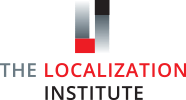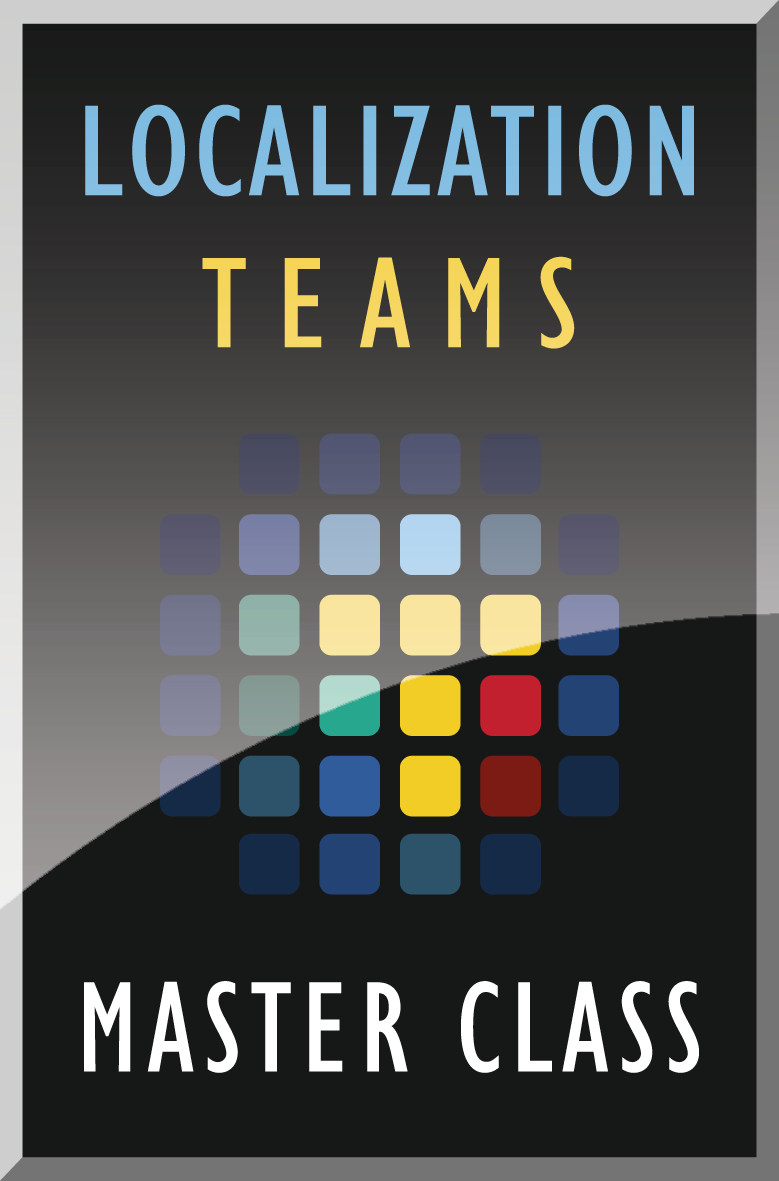Ensuring Team Success While Driving Strategy

I had the opportunity to interview a pair of charismatic localization leaders about how they used the Globalization Strategy Playbook to validate and expand on their strategy and metrics, especially around the language strategy for products and marketing. Inés Rubio San Martin is Director of Language Services (their globalization department) for Emerson’s Test & Measurement Business Group (formerly NI), and Satoko Yuda is the Language Strategy Manager there, reporting to Inés. Working together, they figured out how they needed to gather data to support their strategic efforts with stakeholders and management. Their story is a wonderful case study of putting the concepts in the Playbook into practice.
As I was writing about that for a separate article, I was struck by all the ways their efforts illustrate many of the ideas we discuss in the Localization Teams Master Class, including strategy, communication, trust, stretch goals, training, and more. In particular, I was inspired by how they leveraged each other’s strengths. Inés and Satoko’s collaboration is also a great case study for the Teams Master Class.
I started by asking Inés about the involvement of other globalization team members in the strategic efforts—what did the team members know about the work, and how did they react? She responded by describing how the communication with the team regularly contributes to the strategic efforts.
Inés Rubio – Language Services Director at National Instruments (Testing and Measurement Systems at Emerson): We’ve been doing an iterative exercise since we created the Language Services team, where we run a survey and gather pain points from the team. I realized that 90% of the time their points are not only valid, but they also bubble up as strategic needs.
They think they’re complaining, and they might not bring it up if it was not an anonymous survey, and it’s actually such useful information! We present the results back to the team. We tie it to the company strategy and to the assessment that we did at the team’s creation—issues we wanted to work on, challenges. All of that combined is our roadmap, which we keep iterating on. So the team knows where we are going—what we are prioritizing, work that we would love to do but we just don’t have the resources, and so on.
Inés described how Satoko did the work to gather and analyze the strategic metrics—the data they needed to inform and drive the language strategy. Again, I heard echoes of best practices for teams: listening to the team, constant communication, attention to stakeholder needs. Inés described how it works in their department:
Inés Rubio: It is definitely a team effort. Satoko works very closely with the two team managers. Giorgio Mattiuzzois leading all the translators who are now governance experts, and testers. And then Kelly Ku leads all the project management efforts, the program management. Satoko works with them constantly, especially on the project management side, because the leader of project management has been wearing different hats, managing stakeholders, following the strategy of the different teams, monitoring how needs evolve.
Satoko followed what is important for the stakeholders—what are the KPIs they care about? She has been constantly hearing from our stakeholders through these peers of hers. So Satoko works very closely with the other leaders in the team.
In the Localization Teams Master Class, we place considerable focus on change management, and how people often resist change. Inés described how the resistance to time reporting faded as the team saw the benefits:
Inés Rubio: We had a bit of resistance on time reporting. It’s a team that worked for 20 years without any visibility on velocity or the number of words that they manage in a year.
Seeing how those numbers did not look great historically, we felt resistance to publicize those, but thanks to automation and machine translation, they now feel proud of their output.
They have seen how our team is being recognized outside of Language Services. We’re invited to different forums to present, thanks to the fact that we have that data. So at first there was a bit of resistance, but at the same time they realized that knowing where we stood was the first step to be able to improve. We needed to identify improvement opportunities before we could tackle them.
I asked Satoko about how she worked within the company to get the data she needed, and how she informed the Language Services team about what she was doing in her search for data that would help inform the language strategy.
Satoko Yuda – Language Strategy Manager at National Instruments (NI is now a part of Emerson): Because we did not have much data on hand, I started by identifying what data we needed to obtain and how we were going to use it. I started to reach out to multiple different stakeholders as each dataset was owned by a different team. Some data was readily available, but some wasn’t, and it required some digging. We prioritized the data that was most important to us, and from there we started to add datasets one by one and started to use them for analysis and strategic decision making.
As the data was being gathered, I shared data and insights quarterly with the team. I asked the team what kind of data they were interested in seeing. They wanted the revenue information, by product by country.
When certain data was not readily available to provide particular insights they were interested in, I shared the reasoning and added as an action item to take a look further later. Overall, they were really interested in looking at the data they have never seen before.
The team was also interested in some of the survey responses, such as CSAT and our documentation feedback, to understand what customers were saying about our products and services. For example, we have more visibility on which documentation pages are useful to them and what type of information they are looking for in our documentation.
The data that Satoko provided inspired Language Services team members to look at customer satisfaction, for example, and got the team engaged in the strategic process. Furthermore, the information sharing was critical to the success of the project because the team is distributed—not unusual for a localization team. Here’s my interchange with Satoko:
Satoko Yuda: I felt that it was important to actively share with the team what’s being worked on in terms of language strategy. This is because this was a completely new area, which some may not have been familiar with. Rather than sharing the final version of my work, I shared as often as I could regardless of the size of updates. Another reason is that I work fully remote, and our team is geographically distributed, so I felt that frequent and active communication with the team was important.
Mimi Hills: Have you seen that the team had learned from the information you shared with them?
Satoko Yuda: I believe so. When we share out any decisions, we now provide data to support them. This helps the team understand why we are making changes in our language strategy.
I believe the mindset is also shifting. Before all the data was available to us, we relied on internal knowledge to make decisions. I believe that with this data at hand, we can move forward more confidently and quickly because we back up our vision with concrete information.
Mimi Hills: Satoko, what have you learned from the process?
Satoko Yuda: It was quite a bit of learning in many aspects. I have acquired proficiency in managing, analyzing, and visualizing data effectively to share insights and to help make decisions, while also cultivating an understanding of local market needs, company strategy, and strategic implications on globalization.
Mimi Hills: Did you see this as a stretch goal for yourself? What did you learn about yourself?
Satoko Yuda: Yes. I was not sure about taking this role when Inés first brought this up to me. Nobody had done this in our team, and I was concerned about failure. It seemed to me that there were a lot of tasks to be done within the first year. The first thing I did was to break it down into smaller actionable tasks. Once that was done, and as I made progress, I felt more comfortable and started to build confidence. Another big part of learning is to understand the trust others have in me to do this job. Even though I wasn’t confident, Inés trusted that I could do it; otherwise she wouldn’t have brought this up to me. I didn’t see that in myself at that time, but her trust helped me move forward.
Mimi Hills: So, her trust in you played a role.
Satoko Yuda: Her trust was a big factor, and that helped me build confidence.
What struck me as I interviewed Inés and Satoko was how well they understood each other’s strengths to work together as a powerful team. Inés set the direction and described the big picture. She put her trust in Satoko to determine what data they needed, how to get it, and how to organize it. They worked together to decide who needed what information in what format. The success of their collaboration is an excellent example of how teams thrive when they have done all the homework to ensure success.
This article was written by Mimi Hills, instructor of The Localization Teams Master Class. The next edition of the class begins on May 1st and registration is now open on the course page linked below.
Disclaimer: Copyright © 2021 The Localization Institute. All rights reserved. This document and translations of it may be copied and furnished to others, and derivative works that comment on or otherwise explain it or assist in its implementation may be prepared, copied, published, and distributed, in whole or in part, without restriction of any kind, provided that the above copyright notice and this section are included on all such copies and derivative works. However, this document itself may not be modified in any way, including by removing the copyright notice or references to The Localization Institute, without the permission of the copyright owners. This document and the information contained herein is provided on an “AS IS” basis and THE LOCALIZATION INSTITUTE DISCLAIMS ALL WARRANTIES, EXPRESS OR IMPLIED, INCLUDING BUT NOT LIMITED TO ANY WARRANTY THAT THE USE OF THE INFORMATION HEREIN WILL NOT INFRINGE ANY OWNERSHIP RIGHTS OR ANY IMPLIED WARRANTIES OF MERCHANTABILITY OR FITNESS FOR A PARTICULAR PURPOSE.



